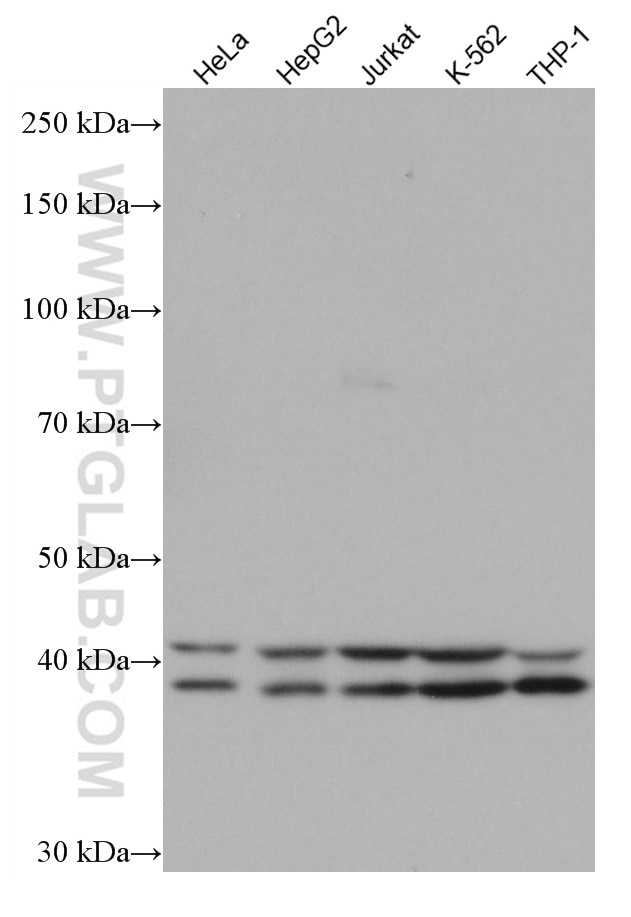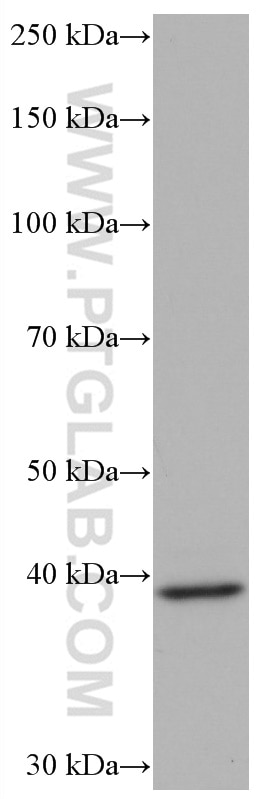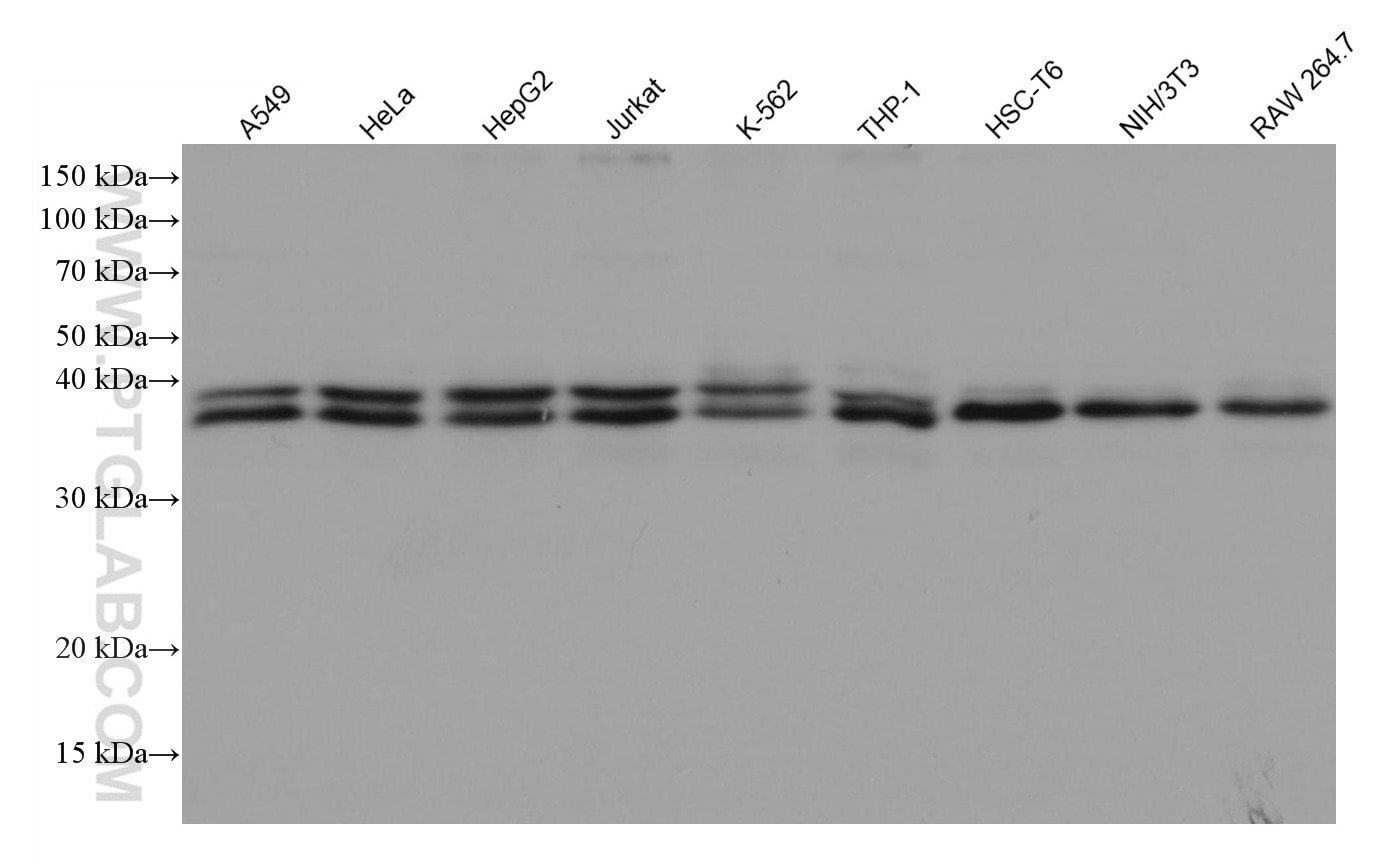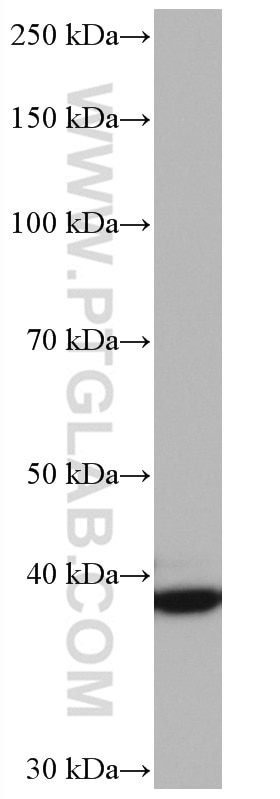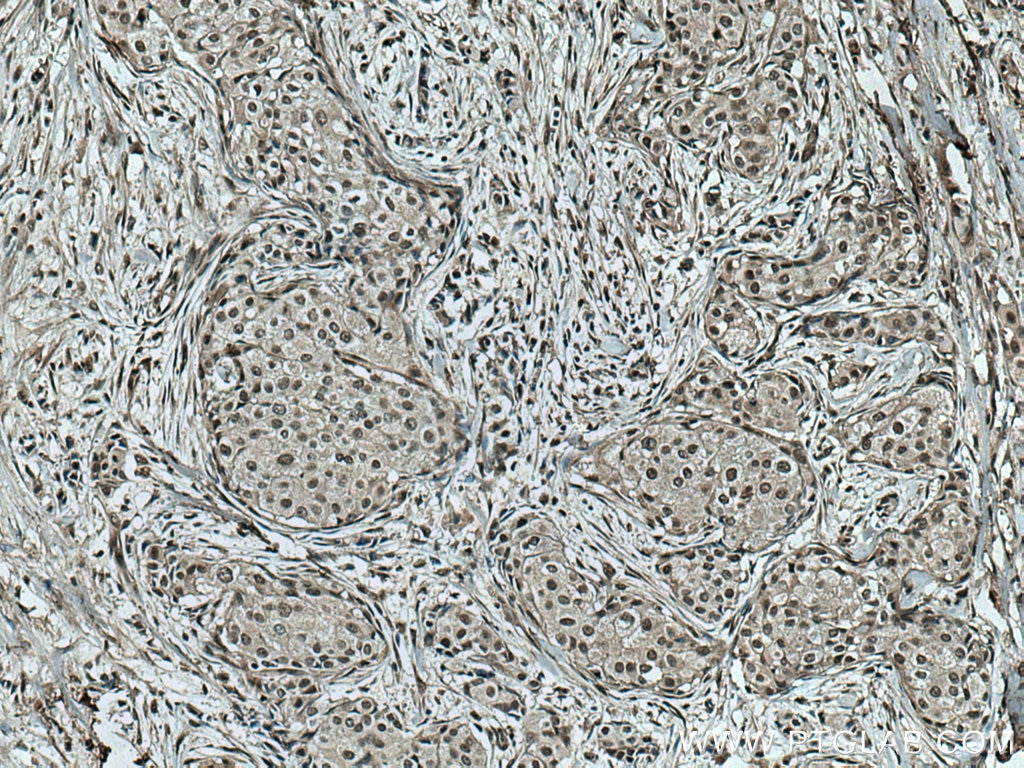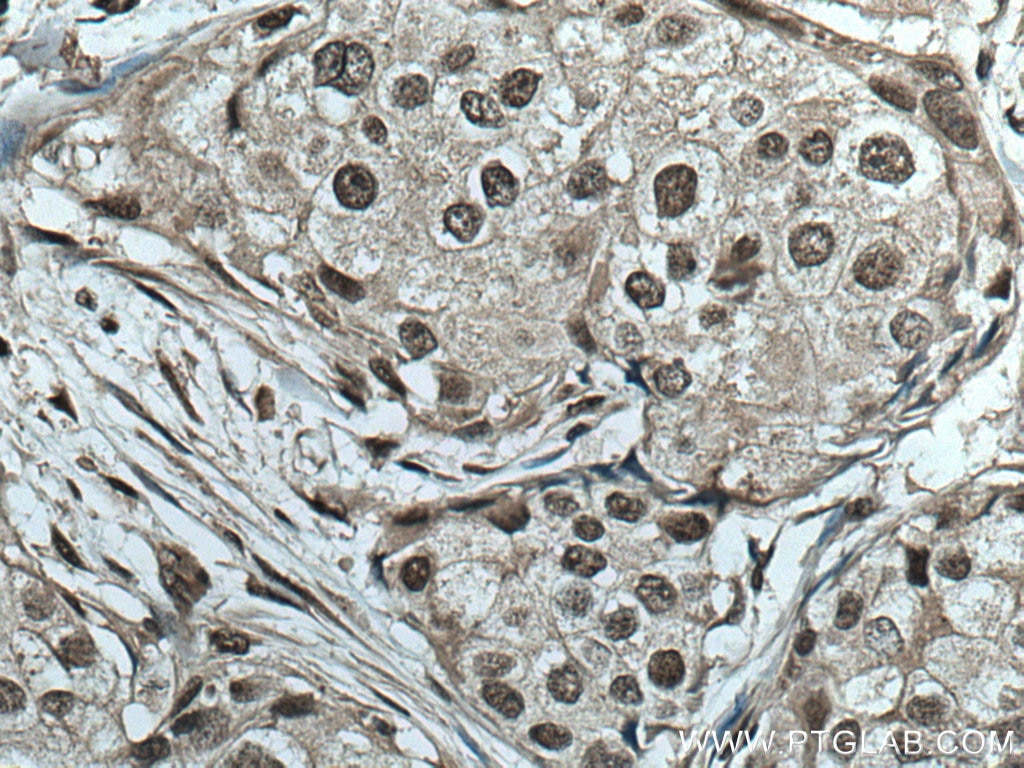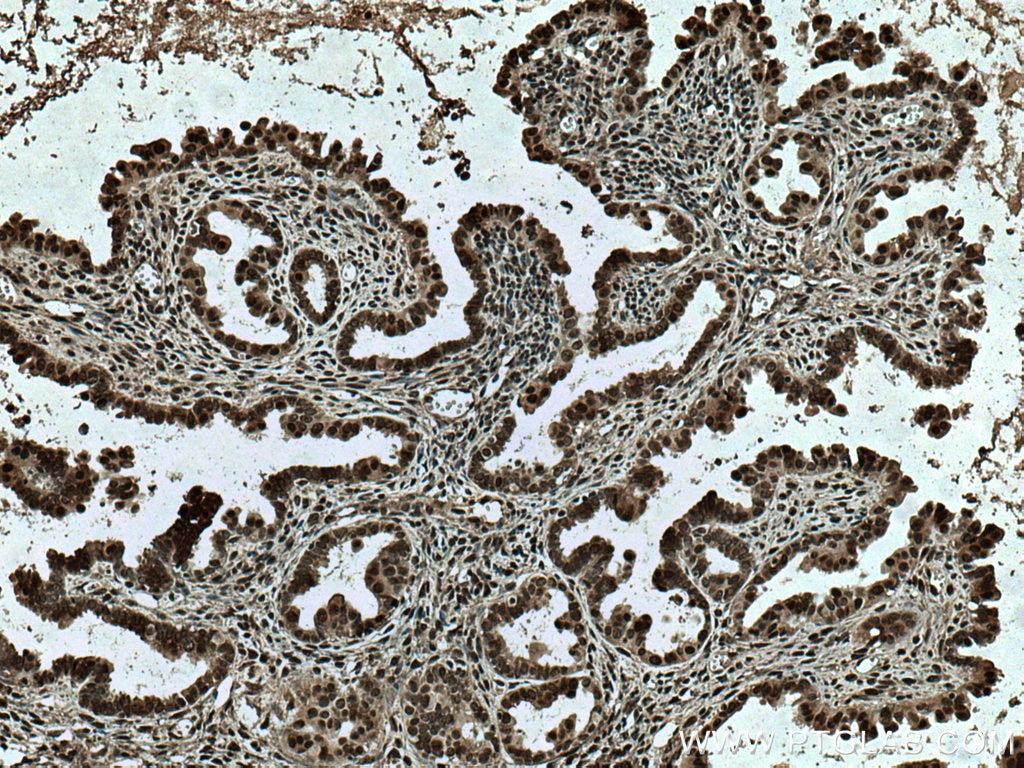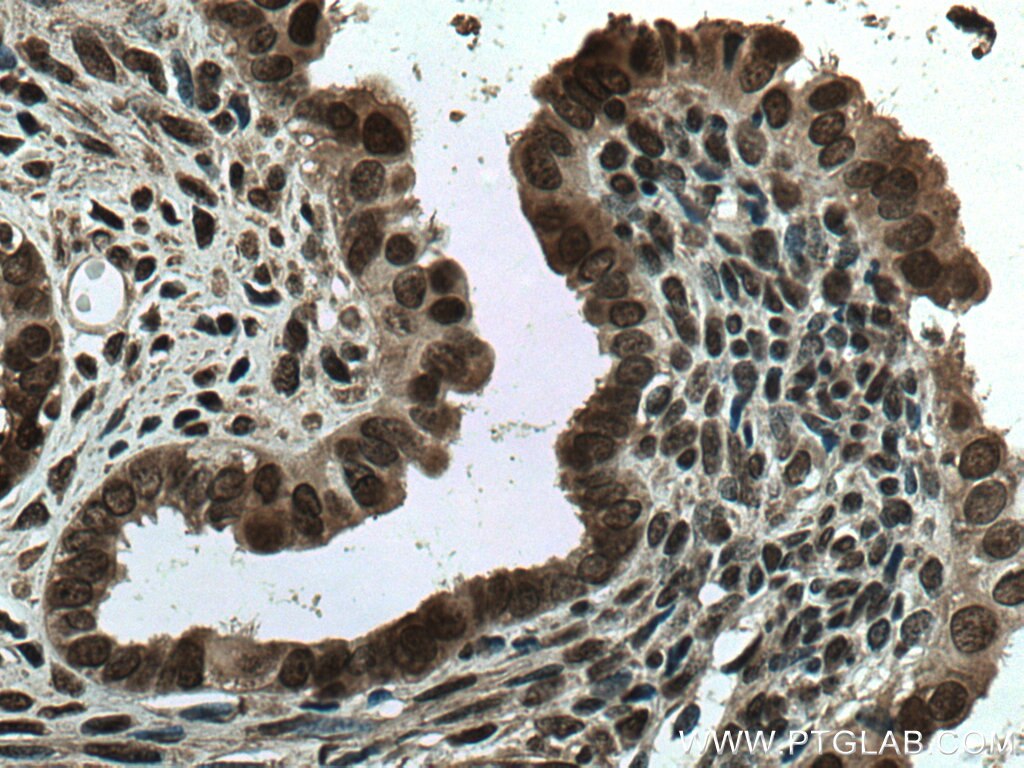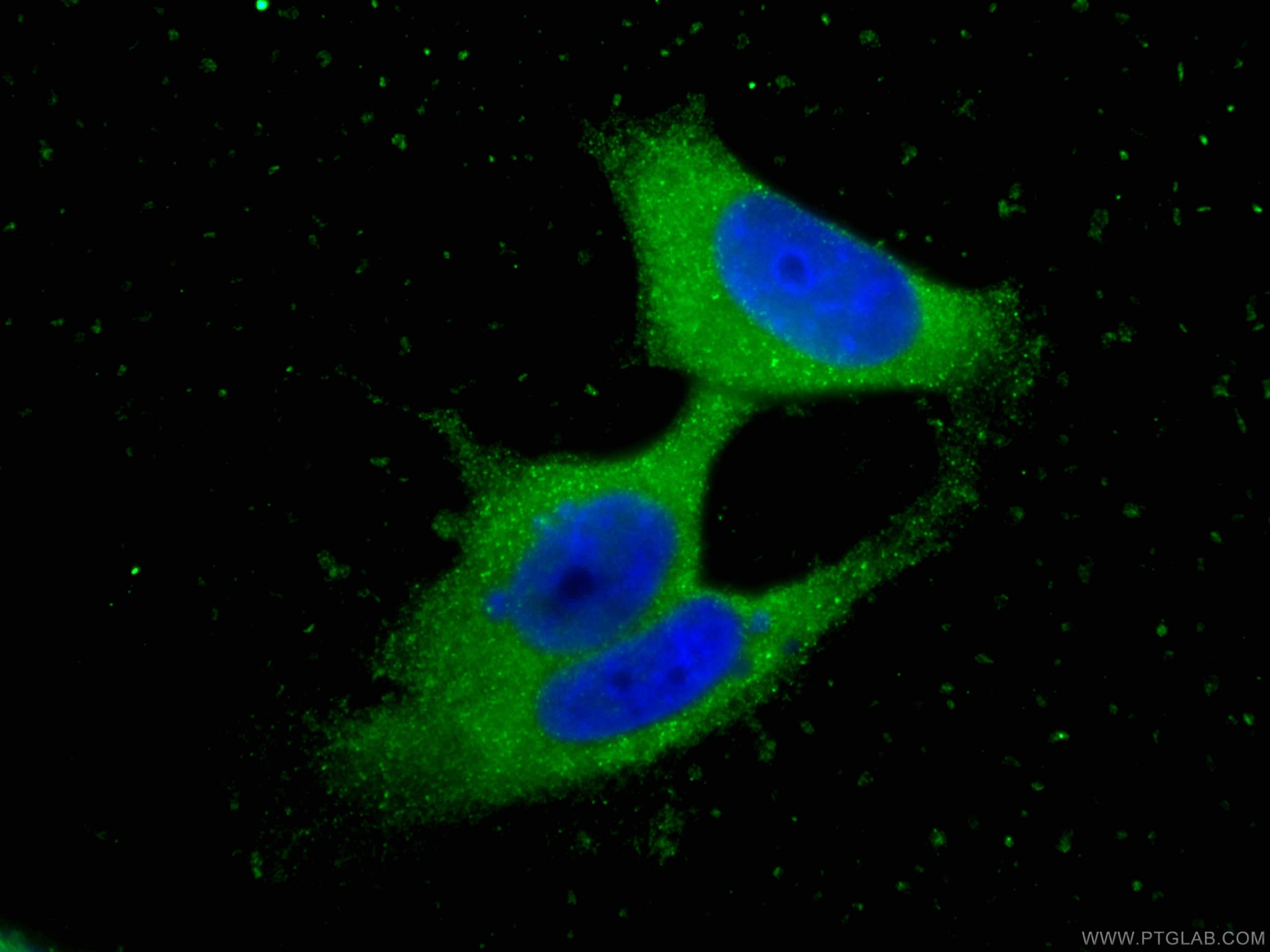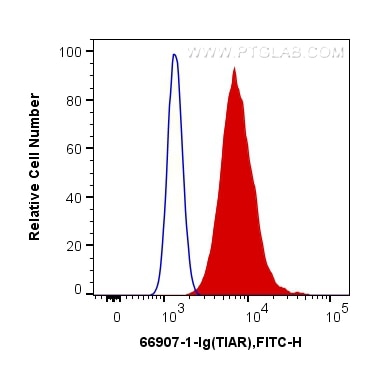Validation Data Gallery
Tested Applications
| Positive WB detected in | HeLa cells, A549 cells, HSC-T6 cells, RAW 264.7 cells, HepG2 cells, Jurkat cells, K-562 cells, THP-1 cells, NIH/3T3 cells |
| Positive IHC detected in | human breast cancer tissue, human ovary tumor tissue Note: suggested antigen retrieval with TE buffer pH 9.0; (*) Alternatively, antigen retrieval may be performed with citrate buffer pH 6.0 |
| Positive IF/ICC detected in | MCF-7 cells |
| Positive FC (Intra) detected in | MCF-7 cells |
Recommended dilution
| Application | Dilution |
|---|---|
| Western Blot (WB) | WB : 1:1000-1:6000 |
| Immunohistochemistry (IHC) | IHC : 1:250-1:1000 |
| Immunofluorescence (IF)/ICC | IF/ICC : 1:50-1:500 |
| Flow Cytometry (FC) (INTRA) | FC (INTRA) : 0.20 ug per 10^6 cells in a 100 µl suspension |
| It is recommended that this reagent should be titrated in each testing system to obtain optimal results. | |
| Sample-dependent, Check data in validation data gallery. | |
Published Applications
| WB | See 3 publications below |
| IF | See 3 publications below |
Product Information
66907-1-Ig targets TIAR in WB, IHC, IF/ICC, FC (Intra), ELISA applications and shows reactivity with human, mouse, rat samples.
| Tested Reactivity | human, mouse, rat |
| Cited Reactivity | human, mouse |
| Host / Isotype | Mouse / IgG1 |
| Class | Monoclonal |
| Type | Antibody |
| Immunogen | TIAR fusion protein Ag11981 相同性解析による交差性が予測される生物種 |
| Full Name | TIA1 cytotoxic granule-associated RNA binding protein-like 1 |
| Calculated molecular weight | 42 kDa |
| Observed molecular weight | 39 and 41 kDa |
| GenBank accession number | BC030025 |
| Gene Symbol | TIAR |
| Gene ID (NCBI) | 7073 |
| RRID | AB_2882234 |
| Conjugate | Unconjugated |
| Form | Liquid |
| Purification Method | Protein G purification |
| UNIPROT ID | Q01085 |
| Storage Buffer | PBS with 0.02% sodium azide and 50% glycerol , pH 7.3 |
| Storage Conditions | Store at -20°C. Stable for one year after shipment. Aliquoting is unnecessary for -20oC storage. |
Background Information
TIAR, also named as TIA 1 related protein, is an RNA-binding protein which is associated with apoptosis. It has been shown that mouse with disrupted TIAR gene show high levels of embryonic lethality. TIAR plays an important role in cytoplasm and nucleus where it can control translation of some specific mRNAs and activate splicing of exons with weak 5-splice sites. 66907-1-Ig detects 39 and 41 kDa bands in SDS-PAGE. Besides, TIAR also has the 28 kDa and 50 kDa proteins for TIAR exists in multiple alternative splicing forms.(PMID: 12533540, 7533298, 22851315, 8176212)
Protocols
| Product Specific Protocols | |
|---|---|
| WB protocol for TIAR antibody 66907-1-Ig | Download protocol |
| IHC protocol for TIAR antibody 66907-1-Ig | Download protocol |
| IF protocol for TIAR antibody 66907-1-Ig | Download protocol |
| FC protocol for TIAR antibody 66907-1-Ig | Download protocol |
| Standard Protocols | |
|---|---|
| Click here to view our Standard Protocols |
Publications
| Species | Application | Title |
|---|---|---|
Cancer Res RUVBL1/2 Blockade Targets YTHDF1 Activity to Suppress m6A-Dependent Oncogenic Translation and Colorectal Tumorigenesis | ||
Cell Rep hnRNPA2B1 represses the disassembly of arsenite-induced stress granules and is essential for male fertility | ||
Cell Biosci Tumor protein D52 is upregulated in oral squamous carcinoma cells under hypoxia in a hypoxia-inducible-factor-independent manner and is involved in cell death resistance. | ||
J Cell Mol Med LOXL1-AS1 communicating with TIAR modulates vasculogenic mimicry in glioma via regulation of the miR-374b-5p/MMP14 axis. | ||
Research (Wash D C) SERBP1 Promotes Stress Granule Clearance by Regulating 26S Proteasome Activity and G3BP1 Ubiquitination and Protects Male Germ Cells from Thermostimuli Damage | ||
Cell Prolif Lin28a forms an RNA-binding complex with Igf2bp3 to regulate m6A-modified stress response genes in stress granules of muscle stem cells |
